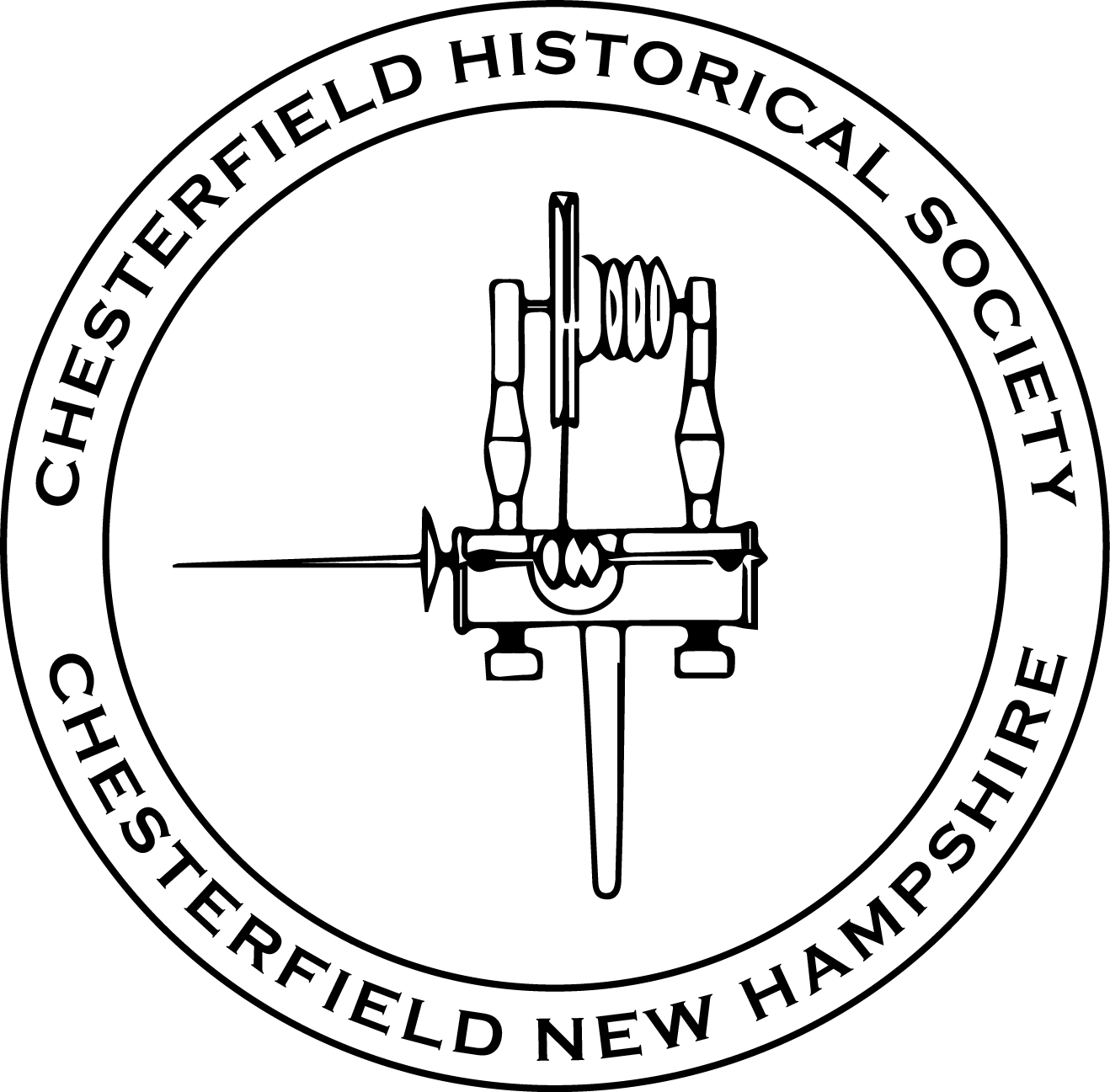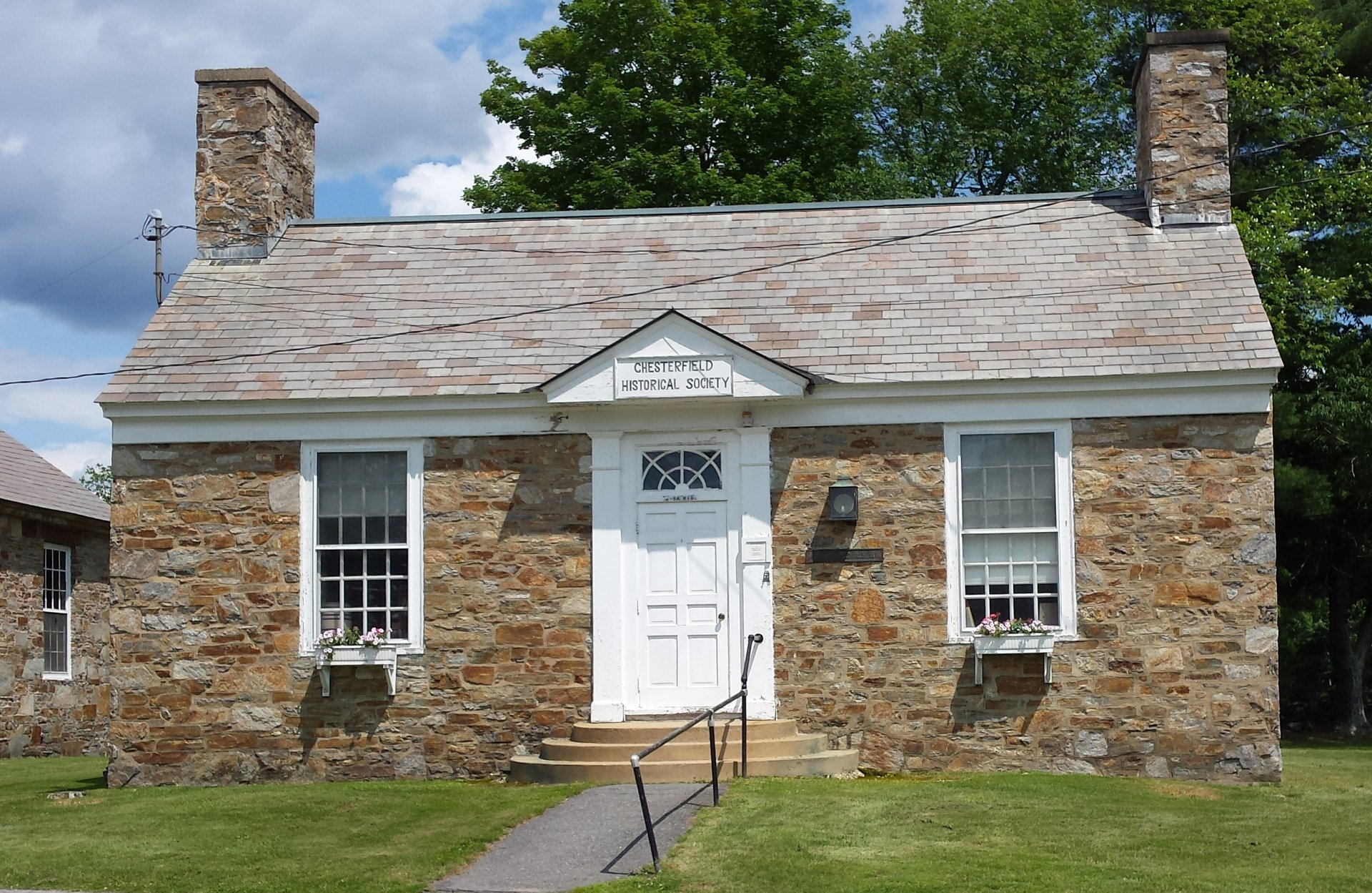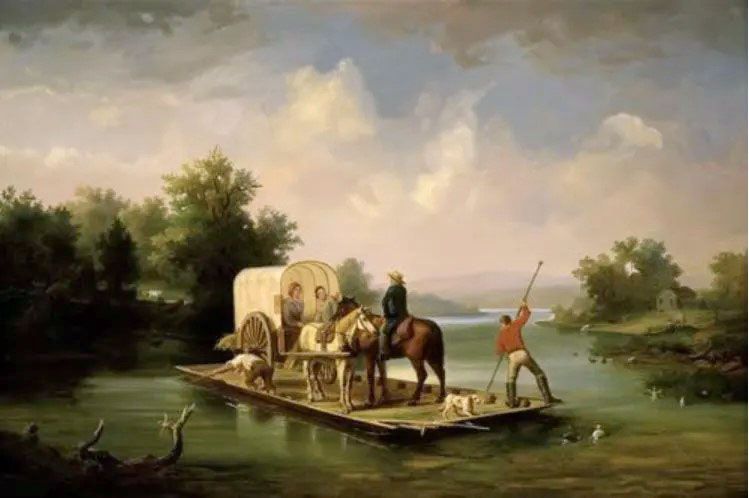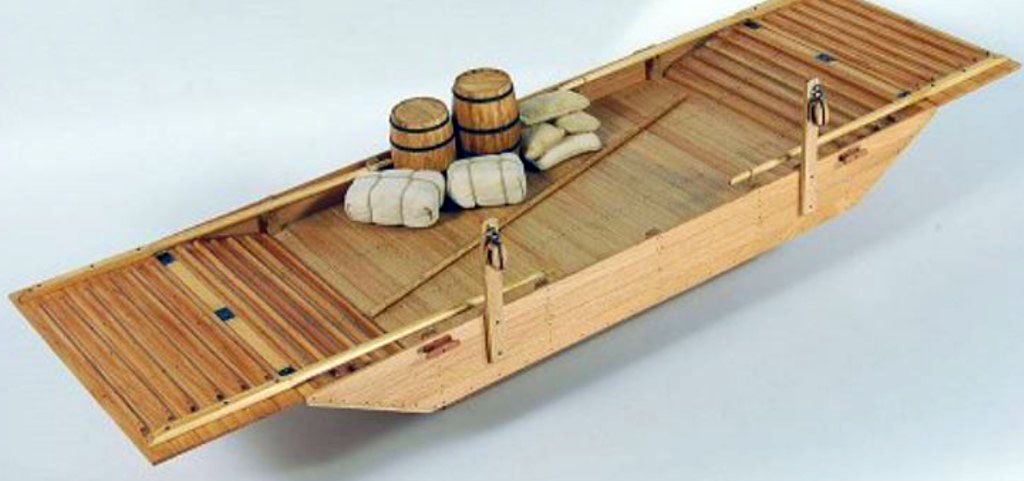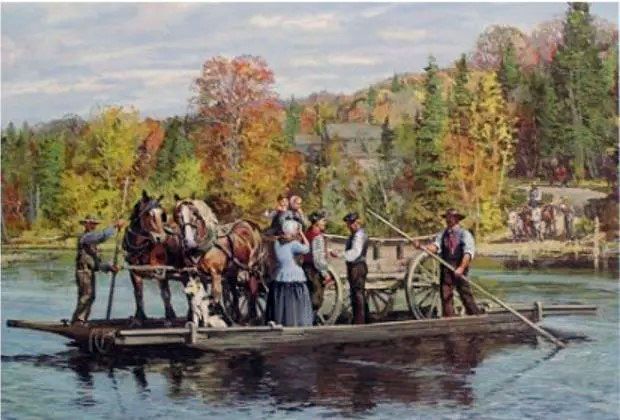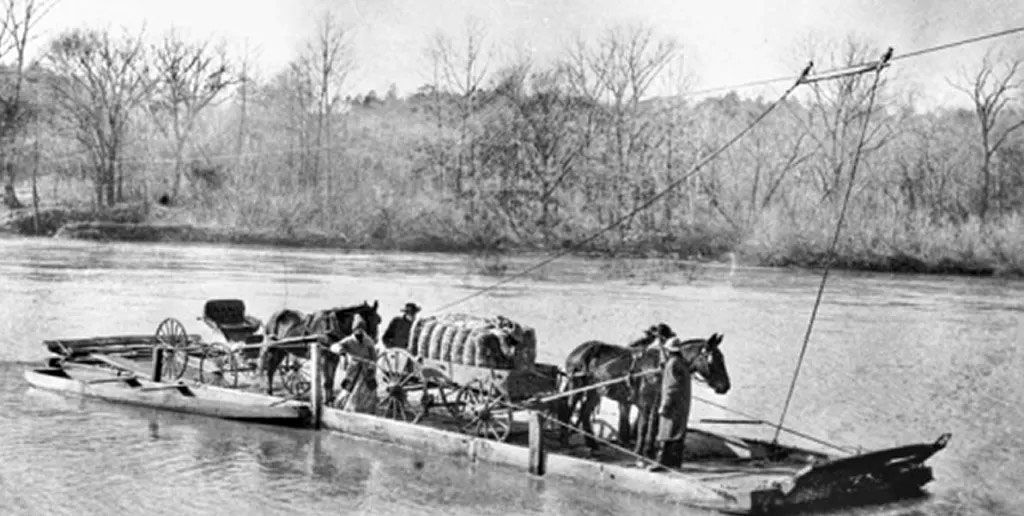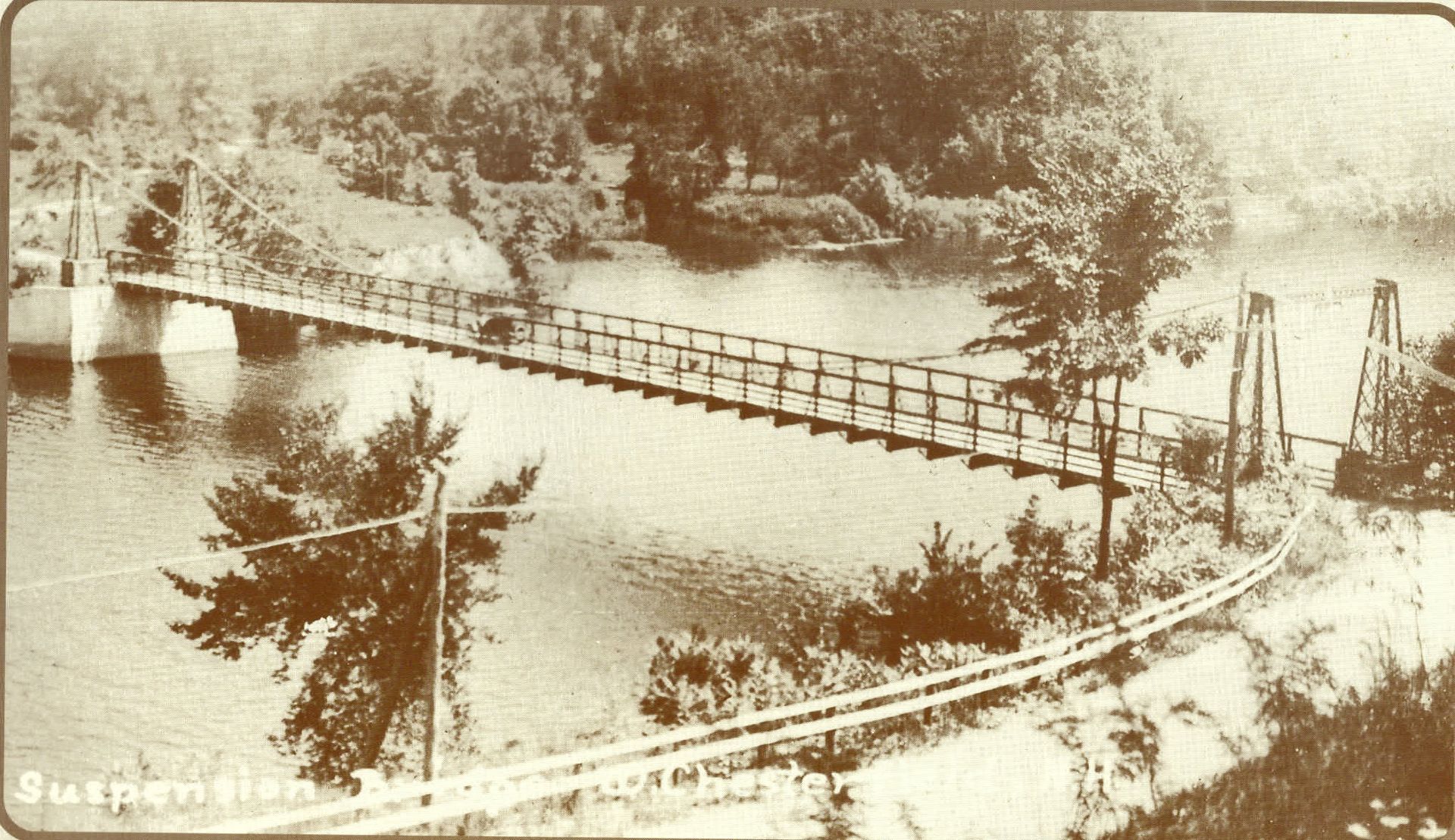“How did you get across the river?” the impatient westbound traveler shouted from the eastern shore.
“Born here,” shouted back the man on the western shore.
By 1761, when the first permanent settlers arrived in Chesterfield, there were already three ferries crossing the Connecticut River. One was in Hinsdale and two were in Westmoreland. The tenacity of Yankee entrepreneurship allowed the ferries to survive the frequent war hostilities. All were privately owned and granted by shoreline, and the collected toll amounts were determined by the owners*. None of these early ferries operated on a schedule. A horn blast or bell announced the arrival of customers, and the promptness of the operator depended on the task in which he was engaged
* Livestock, per head, were charged, size determined the amount. Ferry passage in the evening could cost double. In 1804, the State Legislature set the toll rate for turnpikes at each passenger on foot, 3 cent, horse and rider, 6 cent, horse and chaise or sulky, 12 ⅟2 cents. However, it is not clear if this pertained to ferries.
These ferries needed to operate in the shallowest waters and had to be cheap to build with local lumber. They had flat bottoms with flat, vertical sides. To reduce water resistance, the bottom of both the bow and stern were sloped upward. Loading and unloading was done directly from the riverbank. To facilitate this, sometimes a movable ramp, “apron”, was located at both ends of the ferry. The apron pivoted on hinges and was controlled by a long pole. This allowed the ferry to cross the river directly without having to swing around. Plus, the passengers, livestock, and wagons disembarked in the same order and direction as loaded.
The early ferries were propelled by long poles, some 18 feet long. It was an art to keep the boat under control. Sometimes, the ferryman or men, had to pole upstream and allow the current to carry the boat downstream to the unloading area. Oars helped when the water was too deep. Later on, a rope pulley system was used. The Britton Ferry in Westmoreland (1755 – 1924) at one time used 600’ of rope to cross the 425’ of water. The rope was later replaced with a 3/8” steel cable
Chesterfield's first ferry was operational in 1788. Run by William Thomas, it traversed the river from the north end of Catsbane Island and was referred to as the Norcross or Lower Ferry. In 1800, Samuel Farr and Ezekiel Hildreth established the Upper Ferry, sometimes called the Gilson’s Ferry. By 1870s the poles on the Upper Ferry were replaced by a pulley system. In 1887, permission for an additional ferry was made to the State Legislature, but the request was denied. The State wanted a bridge!
Bridging the Connecticut required agreements between the towns on both sides, as the boundary between VT and NH was not formally established until 1933. Chesterfield failed in attempts to negotiate with Dummerston in 1817 and Brattleboro in 1848. There had been bridges crossing between Hinsdale and Brattleboro since 1804 (pictured in 1895). Westmoreland replaced one of its ferries with a bridge in 1814. However, due to ice, floods, and ill construction, both the Hinsdale/Brattleboro and Westmoreland bridges had to be replaced several times. In 1820, the Westmoreland bridge was no match for the weight of an elephant. The poor thing fell through the floor to its death. The subsequent two attempts to rebuild the bridge failed, and the ferry resumed full-time operation in 1824.
Finally, Chesterfield's negotiations for a bridge with Brattleboro were successful. In June 1889, a suspension bridge crossing the Connecticut between the two towns was finally opened. It cost $12,675, with $8,175 from Chesterfield, $4,500 from Brattleboro. The bridge's opening finally eliminated the trip to the Hinsdale/Brattleboro bridge. A trip that was described in 1848 as “All these years the Mountain Road, one of the hardest pieces of road anywhere about here, has been a bugbear (slang for obsessive fear, irritation or loathing) to Chesterfield people.
All pictures not credited are from
Ferry Boats of Colonial America, Harry Schenawolf, Dec. 11, 2019 - Revolutionary War Journal.com
Bibliography:
The One Bridge Idea that Faded into History, Brattleboro Historical Society, The Reformer Aug. 5, 2021
History of Westmoreland NH 1741- 1970, Westmoreland History Committee 1976, pages 264-268
A History of Walpole NH, Martha McDonolds Frizzel, Vol 1, Walpole Historical Society 1963, pages 518 - 520
History of Chesterfield, Oran E. Randall, D.Leonard-Printer, Brattleboro, VT 1882, pages 171-2.
Ferry Boats of Colonial America, Harry Schenawolf, Dec. 11, 2019 - Revolutionary War Journal.com
